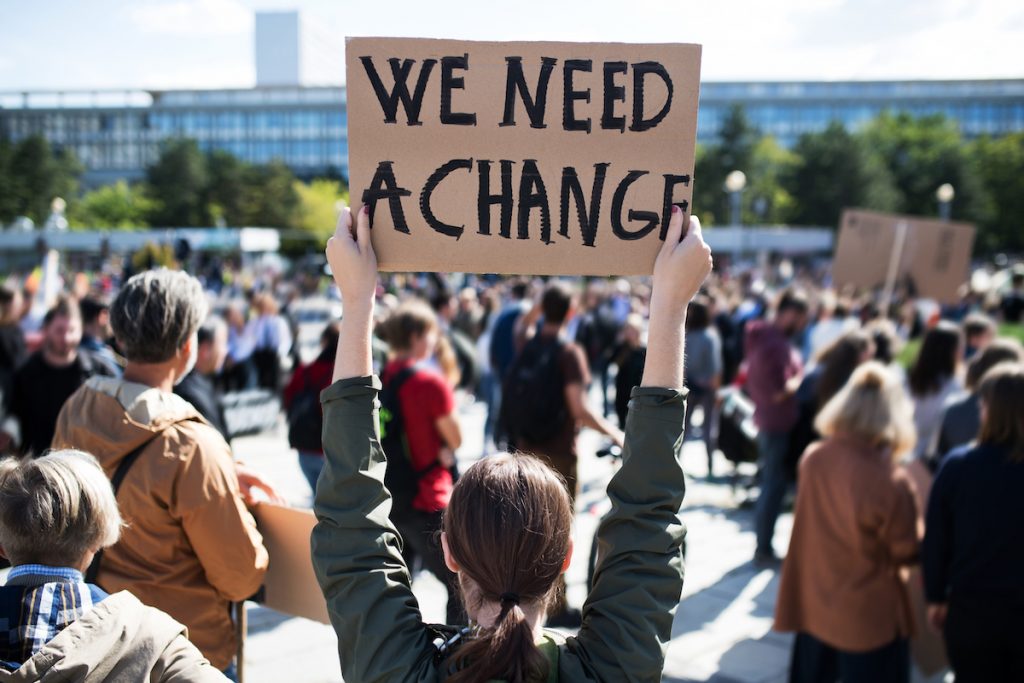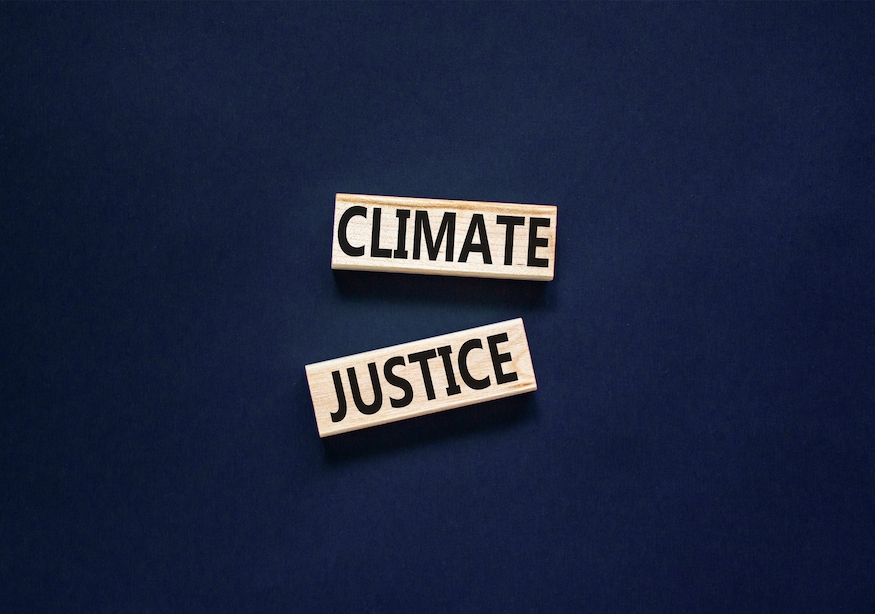The time period Local weather Anxiousness describes a spread of psychological, physiological, and behavioural responses skilled as a response to a perceived risk to oneself, others, and/or the atmosphere that are associated to local weather change (Clayton, 2020). Whereas not pathological in and of itself, local weather nervousness might be thought-about an adaptive response when it stimulates optimistic behaviours and actions (e.g., pro-environmental behaviours). Nonetheless, maladaptive local weather nervousness can happen when signs grow to be troublesome to self-manage, trigger extreme misery, and have an effect on particular person functioning (Burke et al., 2018; Taylor, 2020).
Regardless of a rising physique of proof on the impacts of local weather change on psychological and bodily well being, there stays a dearth of analysis on the impacts of local weather change on the psychological well being of kids and younger individuals (Burke et al., 2018). That is important on condition that youngsters and younger persons are one inhabitants who could also be significantly susceptible to each the direct (i.e., traumatic environmental occasions e.g., flooding, hurricanes) and oblique impacts (i.e., concern and fear concerning the future) of local weather change (Crandon et al., 2022).
In England, roughly one in 5 youngsters and younger individuals (aged 7-24 years) has a potential psychological well being dysfunction (NHS Digital, 2022). Analysis additionally exhibits that youthful individuals often expertise larger ranges of fear, concern, and nervousness about local weather change (Clayton, 2020; Hickman et al., 2021). Provided that local weather change is likely one of the most vital challenges to each world and planetary well being on this century (Ágoston et al., 2022), understanding the impacts of climate-related nervousness in youngsters and younger individuals is key to supporting optimistic psychological well being outcomes throughout their developmental levels.
Within the current paper, Ramadan et al. (2023) aimed to scope the literature for main analysis on psychological well being and climate-related considerations and different destructive feelings in youngsters and younger individuals. The goals of this scoping overview have been to map the present panorama, determine gaps within the literature, and description suggestions related to youth psychological well being follow and analysis.

Understanding the impacts of climate-related nervousness in youngsters and younger individuals is key to supporting optimistic psychological well being outcomes.
Strategies
A scoping overview was an applicable strategy to synthesise the proof associated to the particular analysis query (Arksey & O’Malley, 2005). Particularly, the authors used expansive inclusion standards to determine and map out the character and extent of the proof and determine any gaps within the literature.
The authors adopted a structured analysis course of applicable for a scoping overview by adhering to the PRISMA-ScR tips (Moher et al., 2009; Tricco et al., 2018). Digital (i.e., Embase, PsycINFO, and MEDLINE databases) and guide searches (i.e., reference lists of included research and critiques) have been employed to determine research related to the analysis query; extract knowledge from the included research; and collate, summarise, and report the outcomes from the literature.
Information on the variety of younger individuals included within the research, their imply age/age vary, the nation the place the research was performed, pattern traits, research design and strategies, climate-specific psychological well being end result and findings, elements related to climate-related destructive feelings, protecting and coping elements, and authors’ conclusions have been extracted utilizing a standardised knowledge assortment spreadsheet. Whereas not obligatory for scoping critiques, an evaluation of analysis high quality for every research (i.e., an evaluation of methodological limitations or danger of bias of the proof) was not undertaken for this overview. Findings have been reported by a tabular synthesis, with a story commentary. The authors summarised the overview findings by sorts of outcomes, the nation the place the analysis was performed, and whether or not there was an older comparability group.
Outcomes
The overview included 26 research of kids and younger adults (imply age ≤ 26.0 years; age vary 10–35 years) throughout 31 nations. Most research have been performed in developed nations, and over half of all research have been performed in three nations (Sweden, Australia, and the US; n=16). The whole pattern measurement on this overview was 34,215 individuals, nonetheless, age was not reported within the case of the three research. Research designs included quantitative (n=18), qualitative (n=3), combined strategies (n=4) and a case research (n=1).
The 12 months of publication for included research ranged from 1995-2022, while most research have been printed between 2012-2022, and slightly below half (n=11) throughout or after 2020.
Measurement of climate-related destructive feelings diverse throughout research and included psychometrically validated measures, using personal questionnaires and tailored measures, and single Likert-scale questions. A variety of destructive feelings associated to local weather change have been reported and these correlated with signs of psychological ill-health. Local weather-related destructive feelings included considerations, nervousness, and fear (n=16 research) while different destructive feelings (e.g., anger, stress, unhappiness, boredom) have been reported for 9 research. Nonetheless, the overview additionally discovered coping methods (e.g., efficacy, hope and self-described coping methods; n=11 research) and pro-environmental behaviours (n=4 research) have been applied by younger individuals to handle their climate-related destructive feelings.
Primarily based on these findings the authors proposed a conceptual framework outlining a bi-directional interplay between climate-related destructive feelings and psychological well being. Integral to the framework are danger elements related to local weather change (e.g., direct and oblique impacts) and protecting elements (e.g., coping mechanisms, pro-environmental behaviours) which may mediate or reasonable psychological ill-health (e.g., nervousness, despair).

Younger individuals expertise a spread of destructive feelings about local weather change together with nervousness, worrying, anger, and unhappiness.
Conclusions
This overview discovered that youngsters and younger persons are fearful about local weather change. Nonetheless, the overview additionally confirmed there are elements which may assist wellbeing or dealing with local weather change. These included: consciousness of potential options; belief in environmental organisations; motivation to take part in pro-environmental behaviours; and psychological elements resembling optimism, hope and meaningfulness.

Activism and motivation to take part in pro-environmental behaviours assist younger individuals’s wellbeing or dealing with local weather change.
Strengths and limitations
Systematic procedures have been adopted on this overview to make sure transparency and reproducibility. The digital search methods have been modified for every database (included within the supplementary file). Screening and overview levels have been undertaken by the analysis staff with additional dialogue on included research to mitigate towards bias. Nonetheless, the overview protocol was not prospectively printed which limits transparency.
An evaluation of analysis high quality was not undertaken, however the authors restricted their search to research printed in peer-reviewed journals which have been deemed extremely credible as a consequence of rigorous peer-review processes.
Whereas a scoping overview goals to be as complete as potential, it doesn’t attempt to be exhaustive. Within the current overview, research printed in English and French have been included. Related research in different languages and inclusive of extra numerous cultures and indigenous populations (who could have completely different experiences of climate-related nervousness) could subsequently have been omitted. Whereas conceptual mapping was not an goal of this overview, the varied terminology related to this subject (and referenced by the authors on this overview), could have additionally warranted additional exploration for the included research.
Lastly, the authors proposed a conceptual framework outlining a bi-directional interplay between destructive feelings related to the existential risk of local weather change and psychological ill-health with danger and protecting elements as potential mediating/moderating elements. Inside the confines of a scant analysis panorama on local weather change and younger individuals’s psychological well being, this framework could function a helpful and well timed useful resource for the event of focused and applicable interventions.

The varied terminology utilized in local weather change analysis and the included research could require approaching findings with warning.
Implications for follow
The conceptual framework outlined by the authors right here could also be useful for these supporting youngsters and younger individuals to handle climate-related destructive feelings. Furthermore, the framework could have applicability to the micro- (i.e., household, friends), meso- (i.e., faculty, group), exo- (i.e., authorities, media) and macro- (i.e., tradition) programs which might be important in youngsters and younger individuals’s expertise of climate-related nervousness (Crandon et al. 2022).
From an exo-systems perspective, a coverage which connects optimistic way of life behaviours that result in lowered dangers to private and planetary well being and helps greener, prosocial economies and collective well-being (Fairly et al., 2017), could mitigate towards the impacts of climate-related nervousness in youngsters and younger individuals.
At a meso- and micro-systems stage, households, friends, communities, educators, and psychological well being professionals can function key actors in a coordinated local weather change/local weather nervousness response by encouraging pro-environmental behaviours and adaptive coping methods. Inside academic programs, the availability of age-appropriate data centered on motion (versus fear-based data) and programmes/interventions which promote nature connectedness and elevated pro-environmental behaviours might also assist to mitigate towards climate-related nervousness (e.g., Arts-In-Nature; Moula et al., 2020).
From a analysis perspective nonetheless, additional analysis is required to grasp the impacts of local weather nervousness past westernised and developed nations, along with exploring how local weather nervousness could differ throughout youngsters and younger individuals’s developmental levels (Crandon et al., 2022).

The supply of age-appropriate data centered on motion and interventions selling nature connectedness could assist with climate-related nervousness in youngsters and younger individuals.
Assertion of pursuits
Trish Darcy is a Analysis Affiliate with the Division of Well being Sciences, College of York and is part-funded by the NIHR Yorkshire and Humber ARC. The views expressed are these of the creator, and never essentially these of the NIHR or the Division of Well being and Social Care.

